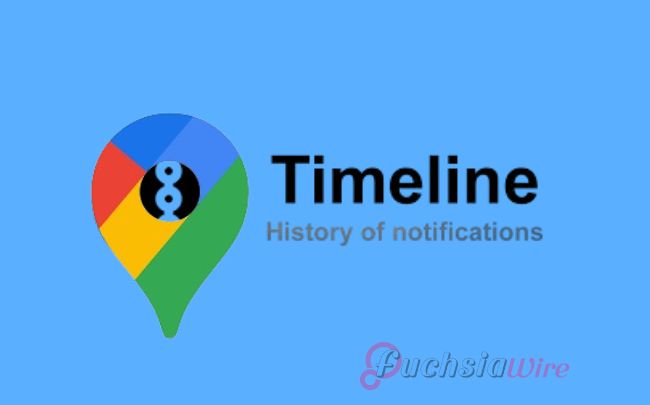Google Maps rolls out on-device timeline history notifications

Google Maps has navigated and explored our world and helped users find nearby businesses. It has navigated the social world, from getting the shortest route to a destination to searching for restaurant reviews. One major element of Google Maps is timeline history notifications.
The tool tracks down a user’s history and the places it visited. Now, Google is widely rolling out a significant change to handling this data: on-device Timeline history.
The objective of the Update
The primary purpose of moving Google Maps timeline history notifications is to improve users’ privacy. It is to provide more opportunities for them to control their data.
Enhanced Privacy: The article explains why Google is moving timeline history notifications to the device. The location of Timeline data on Google’s servers had the advantages of easy accessibility from different devices and data backup.
Minimising Data Sharing: Less information is transmitted to Google’s servers because it mainly goes to the local storage. This means Google cannot closely log in and examine your location details.
Reducing Risk of Data Breaches: Distribution of data on personal handheld devices minimises the chance of a corporate disaster. It strikes a central database server. As much as it is still possible that we are likely to see device-specific hacks, the effect is limited.
Addressing User Concerns: By enabling users to download, Google meets their privacy needs head-on. Its shift also fits a paradigm shift in which the major technology firms are beginning to focus on their users' privacy.
User Control
On-device storage empowers users with greater control over their Timeline data in several ways:
Direct Data Management: Users can directly administer and remove the Timeline information saved on their devices. This makes handling the location history more open and less indirect.
Choice and Transparency: It is evident that users possess sovereign rights to the data. They know the difference between storing and syncing data on the device with a cloud.
Reduced Reliance on Google's Servers: Synchronizing data locally means that users are not dependent on Google servers. They are the primary repository for the history of the user’s location. In a way, this gives them somewhat more control over their information.
Potential for Offline Access: At times, this enables the storage of some or most of the Timeline data on the device. However, some of the functionalities might be unavailable offline.
Core Components
The shift to on-device Timeline history in Google Maps brings several key features that enhance user privacy and control:
On-Device Storage: Information on how the History of Timeline is now safe locally on the device
The shift is from having can storage at the cloud level to personal on-device storage. This means:
Reduced Data Transmission: This reduces the extent of the reduction data that goes to Google. Some features, such as optimum amo and the formation for fundamental Maps operations and guidance, are worth mentioning.
Device Dependency: Your Timeline is in a connection to the part now the device that records it. This means your timeline on your phone will differ from any timeline for your table, for instance.
Offline Access: In the future, some aspects of the app will be in implementation. The timeline may be accessed only partially using some features without an Internet connection.
Backup and Restore
On-the-device storage is still more private than cloud storage but requires managing one's backup. Google is providing mechanisms for this:
Backup Option: The platform's new feature allows users to back up their on-device Timeline data. These backups will probably go to the cloud, probably Google Drive, but the producers should control the process transfer.
Between Devices: Google also offers methods to share Timeline data with other devices or back up its contents. This is especially important for those users who changed their phones. It is not precise how this transfer will occur.
Considerations for Backup: It is, however, nice. However, if you do not synchronise or Timeline data, it will be permanently deleted if your device is lost, damaged, or restored to factory settings.
Auto-Delete Option
To further enhance user control over their data, Google is also implementing an auto-delete option for Timeline data:
Automated Deletion: This feature enables the users to choose the rod upon which their Timduringe information should be deleted.
Monthsanular Control: Users can choose to delete their entire Timeline data or selectively delete only some.
Proactive Privacy Management: By default, location history poses a privacy issue. Anyone can steal your location history without permission. Hence, auto-delete offers a worthy solution for removing unwanted history without deleting it.
How to access Facebook's new timeline
Open Google Maps.
Click on your picture in the top right corner of the Facebook homepage.
Select "Your Timeline."
Navigating Timeline:
Click on this date at the top to select the day.
It allows for viewing of places visited and routes taken on the routes in the list.
Tap a place for more details.
Timeline-specific settings, then choosing a sto, auto-delete, and backups for the device.
User Gains
These changes introduce advantages that users mostly consider. They revolve around the organisation of timeline history on user devices. It is easier to manage and does not share personal data with Google Maps so openly. As a result, storing data locally on the device reduces data transmission to Google. It creates controversy periodically and makes it vulnerable to large-scale data leakage incidents.
Users obtain higher levels of data control. Through opt-in mechanisms, they are provided direct access to manage, delete, and back up their data with higher privacy and security. Finally, the auto-delete feature makes it easy for users to delete their location. Backup and transfer make data easily and safely, guaranteeing a timeline during device exchange or loss.
User Insights
The user's reaction impressions are as follows: Some users find privacy beneficial, and the auto-delete feature is another feature that most users like. However, users may face data loss when devices are missing or reset. There is a need for sophisticated and simple backup and transfer mechanisms.
For now, several users have mentioned having difficulty dealing with the backup and transfer work and have recommended that it be simpler. By addressing these points, Google will be a better place to make the feature more private and facilitate its usability.
The Sum-Up
Adding timeline history notifications in Google Maps on users’ devices also helps move from spoon-feeding users. It location information towards giving them more privacy and control over that information. This new feature enables users to upload their travel history to their devices independently from Google.
The auto-delete option accompanying enhanced backup/transfer also helps simplify data management and gives the user far more direct control over the timeline. Google wants all its users to try out this new feature, and users need feedback to fine-tune it.
By interacting with the on-device timeline and contributing their personal experiences, users can significantly influence Google Maps' privacy policy regarding their garbage data.
More Reading: Android Auto Reporting Google Maps Police Alerts Made Easy


